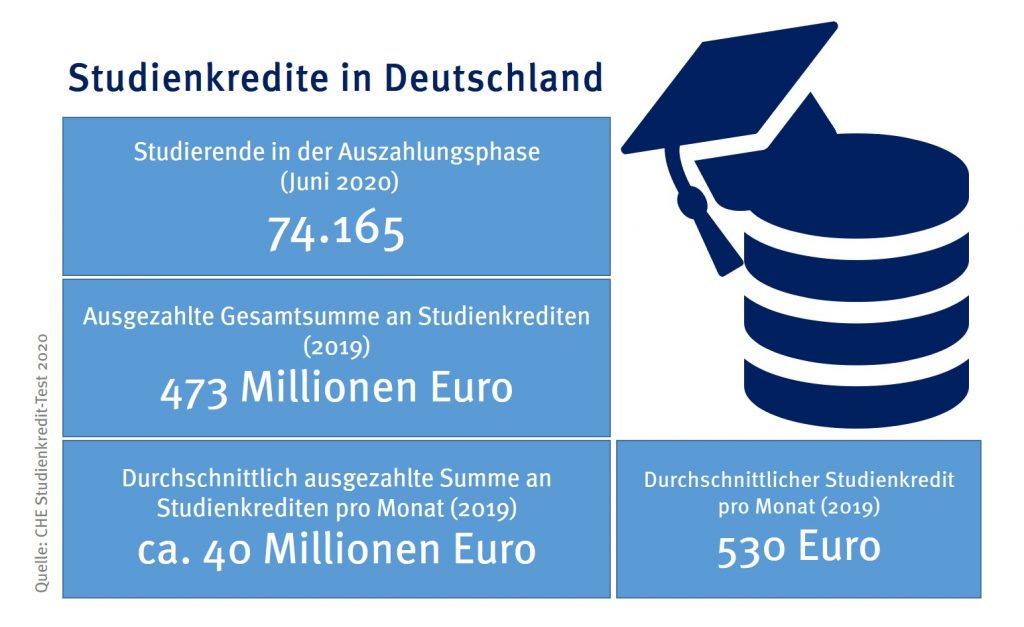
The number of new student loans taken out in Germany has fallen by almost half in the past five years, despite an increase in student numbers. Now the KfW Student Loan, provided interest-free for one year by the state, is available to help students cope with the financial impact of the coronavirus pandemic. However, the market leader’s offer has a number of weak points, as the latest CHE Student Loan Test 2020 shows.
75,000 students in Germany resorted to a student loan in June 2020. Just less than half of all current contracts (44 per cent) were taken out last year. And yet the number of student borrowers has fallen sharply. The number of new student loans taken out fell by almost half between 2014 and 2019 – from around 60,000 to the current figure of 33,000.
According to the survey of loan providers conducted by the CHE Centre for Higher Education, banks, loan associations and education funds pay out around €40 million to students each month − an average of €530 per person.

External financial aid such as student grants (BAföG) and loans have been declining in importance for years, summarised Ulrich Müller. “In fact, part-time work and family support have now become the mainstay of funding for students in Germany,” explained Müller. “This is why students are particularly hard hit by the economic downturn caused by the coronavirus pandemic, because both part-time jobs and previous parental support are under threat,” assessed the Head of Policy Studies at the CHE Centre for Higher Education.
One of the cornerstones of the coronavirus emergency assistance provided by the Federal Government is that students are able to take out a loan, interest-free for one year, provided by the state-owned development bank “Kreditanstalt für Wiederaufbau”, or KfW for short. Alongside the training loan provided by the Federal Office of Administration, the KfW Student Loan is one of the market leaders in the area of student loan products. Four out of five students (81 per cent) currently receiving loan disbursements make use of the KfW Student Loan.
However, the market leader is not necessarily the best offer, as the latest CHE Student Loan Test shows: “Given that it is a product provided by the state, the KfW Student Loan has driven virtually all viable competing offers from the market, and yet it is not perfectly designed,” assessed finance expert Ulrich Müller.
In contrast to other loan offers, the KfW Student Loan does not provide for options such as funding a period of study abroad, paying for tuition fees, or receiving one-off extra disbursements – such as for a new laptop. “In addition, the KfW’s interest rate of 4.36 per cent, charged after the first interest-free year, is the highest of all the student loans investigated in the test,” stated Müller.
Overall, the CHE Student Loan Test 2020 assesses all of the standard offers as reliable and well designed. Many of the 51 student loans and education funds tested gained top marks in several of the five assessment categories (access, volume, costs, risk mitigation and flexibility).
About the CHE Student Loan Test
The CHE Student Loan Test 2020, developed in collaboration with Handelsblatt, was published this year for the fifteenth time. Using 21 individual criteria, it assesses the advantages and disadvantages of 51 student loans that are currently on offer. The test is based on information given by the loan providers. The wide range of detailed information provided in the publication gives students and prospective students a transparent overview of the market. In addition, students can use tables to calculate their individual requirements.
Only available in German language.
